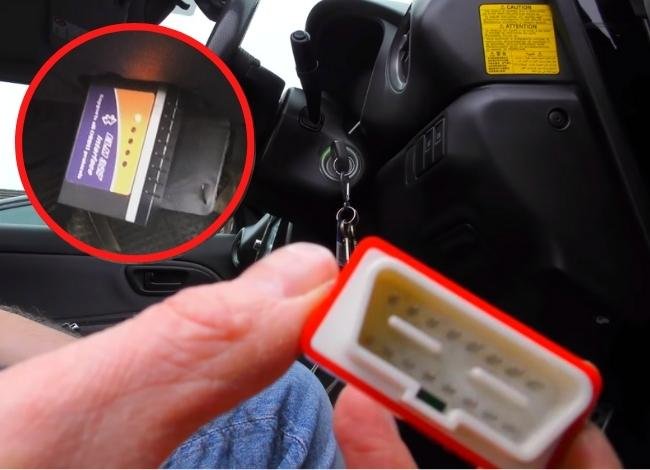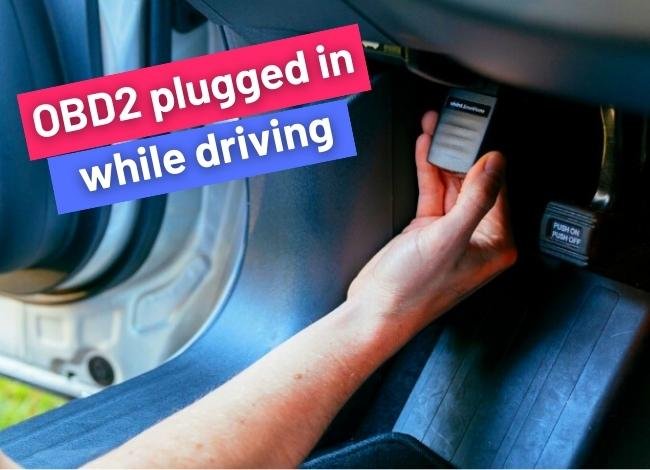Last Updated on September 6, 2025
Modern cars are more advanced than ever, built with sensors, computers, and electronic systems that constantly monitor performance and safety. To access this valuable information, car owners and mechanics use an OBD2 scanner (On-Board Diagnostics, second generation).
An OBD2 car scanning device is a smart diagnostic tool that plugs into the vehicle’s OBD2 port—usually located under the dashboard, near the steering wheel. Once connected, it communicates with the car’s onboard computer (ECU) to read error codes, monitor performance, and provide real-time data about the vehicle’s health.
Instead of guessing why the Check Engine Light (CEL) appears, an OBD2 scanner quickly identifies the exact issue, whether it’s a faulty sensor, emissions problem, or engine misfire. This saves drivers time, reduces unnecessary repair costs, and helps maintain the vehicle’s performance.
In simple terms, an OBD2 scanner is like a “health monitor” for your car—giving you clear insights into what’s happening under the hood.
How Does the OBD2 Port Work?
The OBD2 port is a standardized 16-pin connector that serves as the communication hub between your car’s onboard computer (ECU) and the diagnostic tool. Since 1996, all vehicles sold in the U.S. (and most global markets) are required to have this port, making it a universal system for vehicle diagnostics.
When you plug in an OBD2 scanner, here’s what happens:
- ✅ Reads Diagnostic Trouble Codes (DTCs): The ECU stores fault codes whenever it detects an issue. The scanner retrieves these codes, helping identify problems ranging from engine misfires to emission failures.
- ✅ Monitors Live Data: Beyond error codes, OBD2 scanners can display real-time information such as engine RPM, coolant temperature, fuel system status, oxygen sensor readings, and more.
- ✅ Triggers the Check Engine Light (CEL): If a serious fault is detected, the ECU activates the CEL. The scanner then helps decode why the light came on.
The port itself is always powered, even when the ignition is off. This design ensures that scanners or telematics devices (like GPS trackers and insurance dongles) can access data whenever needed. However, it also means some scanners may draw a small amount of power continuously if left plugged in.
Can You Leave an OBD2 Scanner Plugged in While Driving?
One of the most common questions drivers ask is: “Is it safe to drive with an OBD2 scanner connected?” The short answer is yes—in most cases, it is perfectly safe.

Why It’s Safe
- Designed for Continuous Use: OBD2 scanners are built to stay connected during driving. Mechanics often keep them plugged in during test drives to monitor performance and collect live data.
- Non-Intrusive: The scanner only reads information from your car’s ECU. It does not interfere with the way your car operates, so it won’t affect acceleration, braking, or safety systems.
- Real-Time Monitoring: Leaving it plugged in allows you to track fuel efficiency, emissions, and overall engine performance as you drive.
Things to Keep in Mind
While safe, there are a few things you should consider:
- 🔋 Battery Usage: Most modern scanners consume very little power. However, if left plugged in overnight or for several days without starting the car, some devices may slowly drain the battery.
- ⚡ Power Surges: Starting the engine sends a brief surge of electricity through the system. Quality scanners handle this easily, but very cheap devices may be at risk of damage.
- 📶 Wireless Devices: Bluetooth and Wi-Fi scanners are convenient but may occasionally lose connection or interfere with other wireless signals in the car.
Risks and Precautions of Leaving OBD2 Connected
Although leaving an OBD2 scanner plugged in while driving is generally safe, there are some risks and precautions worth knowing—especially if you plan to keep it connected for long periods.
1. Battery Drain
Most OBD2 scanners consume very little power, but some models—particularly older or low-quality ones—may continue drawing current even when the engine is off. If your car sits unused for several days, this can cause parasitic battery drain.
Precaution: If you don’t drive often, unplug the scanner when parking for more than a day or two.
2. Cheap or Uncertified Devices
Not all OBD2 scanners are made equal. Low-cost devices may not comply with automotive safety standards, which increases the risk of electrical short circuits or inaccurate data readings.
Precaution: Always use a certified, reliable OBD2 scanner from a trusted brand.
3. Power Surges During Ignition
When starting the engine, a surge of current flows through the system. High-quality scanners are designed to handle this, but cheap or poorly built devices could malfunction.
Precaution: If you notice issues when starting the car with the scanner connected, remove it before ignition and plug it back in once the engine is running.
4. Wireless Interference
Many scanners today use Bluetooth or Wi-Fi to connect with smartphones. While convenient, these can sometimes interfere with other wireless systems in your car (like audio streaming or navigation).
Precaution: If you experience connection drops or interference, try a wired scanner for more stable performance.
5. Continuous Use and Overheating
Some compact OBD2 dongles are not designed for constant use. If left plugged in for weeks or months, they may overheat, reducing their lifespan.
Precaution: Check your device’s manual—some models are specifically built for long-term monitoring, while others are meant for short diagnostic sessions.
Is the OBD2 Port Always Active?
Yes, the OBD2 port is always active, even when the car is turned off. This is because it connects directly to the vehicle’s Electronic Control Unit (ECU), which requires constant low-level power to store and process diagnostic information.
How It Works
- The OBD2 port supplies a small amount of continuous power so that scanners or telematics devices (like insurance trackers or GPS fleet monitors) can work at any time.
- When the ignition is turned on, the scanner can access live data streams such as RPM, speed, fuel efficiency, and sensor readings.
- If there is a malfunction, the ECU logs a Diagnostic Trouble Code (DTC) and, in serious cases, triggers the Check Engine Light (CEL).
Why This Matters for Drivers
Because the port is always active:
- Some scanners may draw power even when the car is off, leading to minor battery drain if left connected for days.
- It ensures that memory and fault codes remain saved until cleared, so mechanics can accurately diagnose issues.
- It allows real-time monitoring tools (such as Bluetooth OBD2 apps) to function instantly once the car starts.
FAQs About Driving With an OBD2 Scanner Plugged In
To clear up common doubts, here are the most frequently asked questions about keeping an OBD2 scanner connected while driving:
1. Can you leave the OBD2 scanner plugged in while driving?
Yes. Most OBD2 scanners are designed to stay connected while you drive, and they will not interfere with your vehicle’s performance.
2. Will leaving an OBD2 scanner plugged in drain the car battery?
Not usually. Modern OBD2 scanners use very little power. However, if the car is left unused for several days, some devices may cause minor battery drain.
3. Can an OBD2 scanner interfere with vehicle performance?
No. OBD2 scanners only read information from the ECU. They don’t send commands that affect acceleration, braking, or safety systems.
4. Is it safe to drive long distances with an OBD2 scanner connected?
Yes. As long as the device is securely plugged in and from a reliable brand, you can safely use it for real-time monitoring during long trips.
5. Can OBD2 scanners be used to monitor real-time data while driving?
Absolutely. Many scanners display live information such as engine RPM, coolant temperature, air/fuel ratios, and more. Bluetooth scanners can even stream this data to your smartphone for easy monitoring.
6. Should I unplug the OBD2 scanner when the car is parked?
It depends. If you drive regularly, leaving it plugged in is fine. But if your car will sit unused for more than a few days, unplugging it prevents any chance of battery drain.
Final Thoughts
So, is it safe to leave your OBD2 plugged in while driving?
✅ Yes—it is safe, practical, and often beneficial for real-time diagnostics.
Just remember to:
- Choose a certified, high-quality scanner.
- Unplug it if you don’t plan to drive for a while.
- Follow the manufacturer’s instructions for long-term use.
With the right precautions, an OBD2 scanner can be your car’s best companion—helping you stay on top of maintenance, avoid costly repairs, and keep your vehicle running smoothly.

